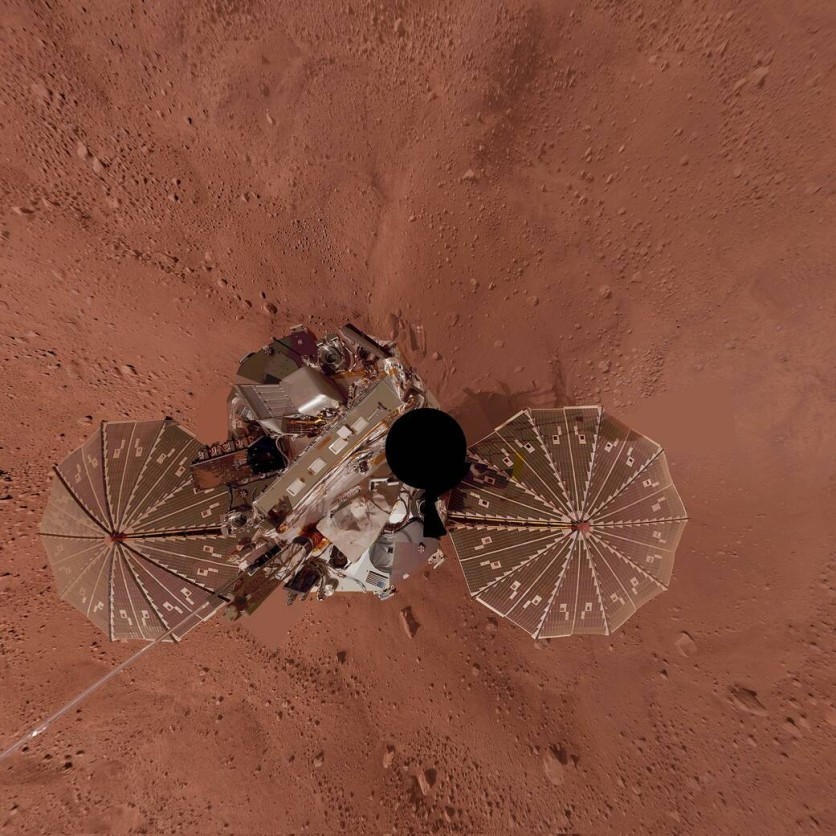NASA's Mars Phoenix Lander captured a striking selfie during its mission on the Red Planet from June 5 to July 12, 2008. The imagery was achieved through its Surface Stereo Imager (SSI), comprising over 100 distinct SSI pointings, each taken through three different filters.

NASA Mars Phoenix Lander Takes Selfie
The mosaic marks the culmination of the lander's three-month study of Martian ice, soil, and atmosphere, commemorating the mission's completion 15 years ago in August 2008.
The Phoenix Mars Lander aimed to unravel the history of water in the Martian Arctic, investigate signs of a habitable zone, and evaluate the potential for life at the ice-soil boundary. On a broader scale, the mission strived to uncover traces of past Martian life, understand the planet's climate and geology, and pave the way for future human explorations.
The lander collected soil samples in search of ice, subsequently confirming the presence of water on Mars. Further analysis indicated that the soil comprised various salts and chemicals, including perchlorate, sodium, magnesium, chloride, and potassium.
However, the lander encountered challenges. On October 28, 2008, the lander entered safe mode due to insufficient sunlight and harsh weather conditions as winter arrived on Mars.
During this period, non-essential activities were halted while the spacecraft awaited commands from mission control. Though communication persisted from October 30 to November 2, 2008, no signals were received after November 2, 2008, signaling the mission's conclusion.
Read Also : More Americans Prefer NASA Missions Against Killer Asteroids Instead of Mars Expeditions: Survey
Mars Is Spinning Faster
In related news, a recent study has revealed that Mars is undergoing an accelerated rotation, spinning faster than previous observations. This new revelation comes from data collected by NASA's InSight lander, which has garnered insights into the Red Planet's rotation.
Numerous factors influence planetary behaviors, and Mars is no exception. The study highlighted that Mars is progressively spinning faster, with a rate of around 4 milliarcseconds per year², as evidenced by the collected data.
NASA's InSight Mars lander played a pivotal role in facilitating this study by providing critical information about the planet's behavior. The accelerated rotational motion of Mars results in a marginal reduction in the length of a Martian day, with each year witnessing a fraction of a millisecond shaved off.
The research also uncovered Mars's tremors, attributed to the movement of its molten metal core. Moreover, the team's findings encompassed phenomena like ice buildup on the polar caps or post-glacial rebound, which involves landmasses rising after being buried under ice.
Sebastien Le Maistre, the study's lead author and principal investigator of RISE (Rotation and Interior Structure Experiment), shared insights into the study's intricacies.
Le Maistre elaborated that the team sought minute variations spanning a few centimeters over the course of a Martian year. He emphasized that such investigations necessitate extensive data accumulation and time to detect such subtle fluctuations.
The juxtaposition of Phoenix's historical self-portrait and the recent insights into Mars' rotation underscores the enduring fascination with the Red Planet and humanity's ongoing quest to understand its mysteries.
Related Article : Mars' Crust Made of 'Heavy Armor' says New Study, Will this Tough Exterior be a Problem Soon?

ⓒ 2025 TECHTIMES.com All rights reserved. Do not reproduce without permission.




